hunting for meteorites

Hunting for meteorites is fun, and just about anyone can do it.
How do you start?
Learn about rocks first. Just rocks. Earth rocks are the most common rocks on Earth (duh), but this is important — if you can understand how different kinds of rocks form on Earth, identifying things that are different is much easier.
Rockhounding is a good way to ease into meteorite hunting. Learning to find fossils and minerals — by looking at fine differences in color and texture — is similar to what you do when looking for meteorites. When you’re out looking for agate or minerals, you’re using the same skills that you’d need to find meteorites: ruling out some rocks because you want to find others.
And that’s all the skill you need to look for meteorites. Kids can do it.
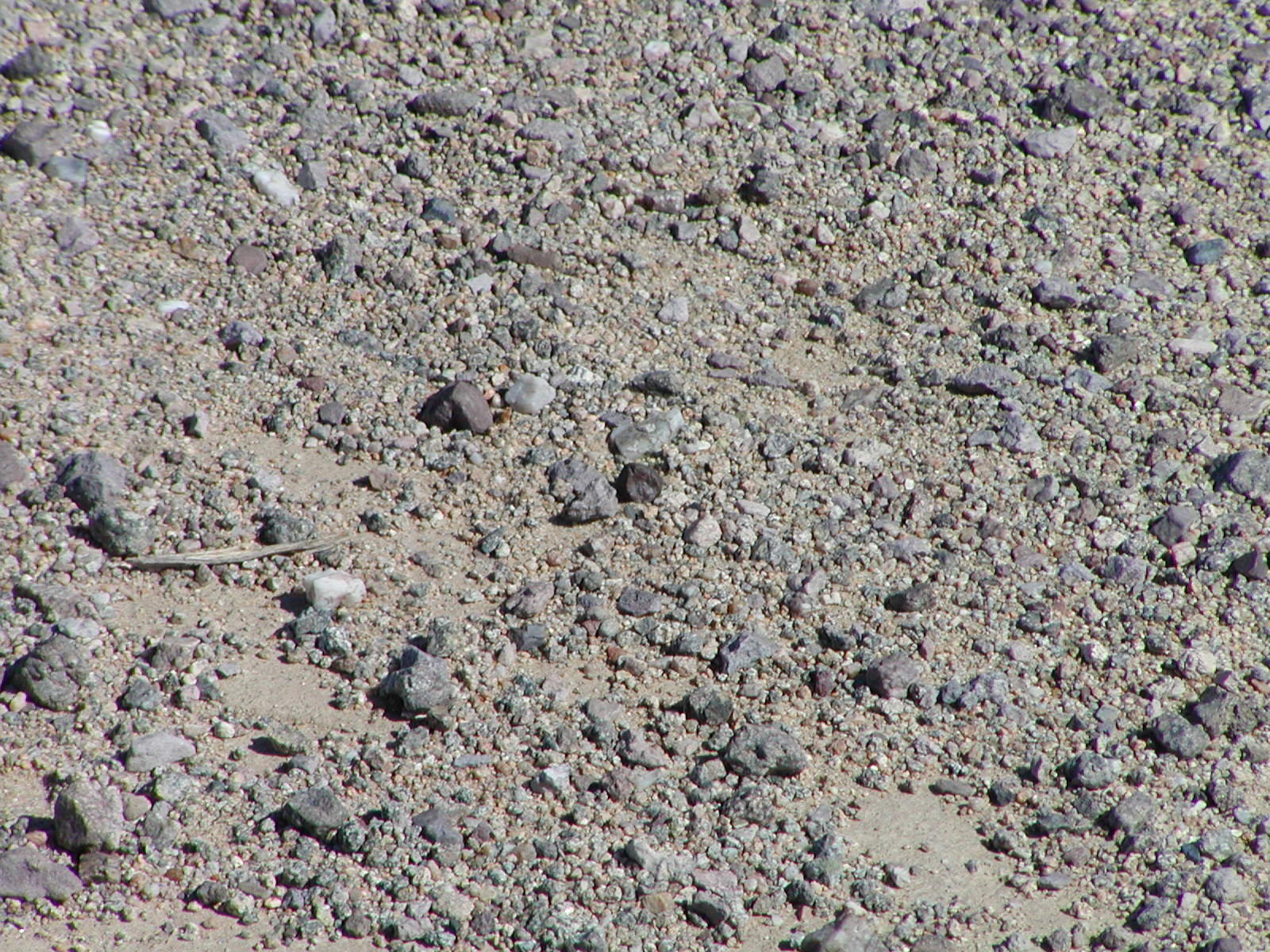
Before you go out to hunt for meteorites, make sure you know what you’re looking for. If you don’t know what meteorites look like, you’ll probably never find one, no matter how hard you look. Thankfully, there’s a lot of information available online. I’ve linked to some useful websites on the Resources and Links page, visible here. Check them out. Here’s a page with photos from some of our meteorite-hunting trips. Teaming up with an experienced hunter can also help. Learning in the field is probably more productive than looking at pictures ahead of time, but early trips can be daunting and discouraging.
Where you hunt is important. In some places, iron-bearing sedimentary or igneous rocks can make hunting just about impossible, no matter how much experience you have, but in others, a visually similar rock would almost certainly be a meteorite. Try to find places to hunt where typical meteorites will stand out.
If you stick with it, and hunt in good terrain, you’ll find meteorites. They fall everywhere, so it’s just a matter of time.
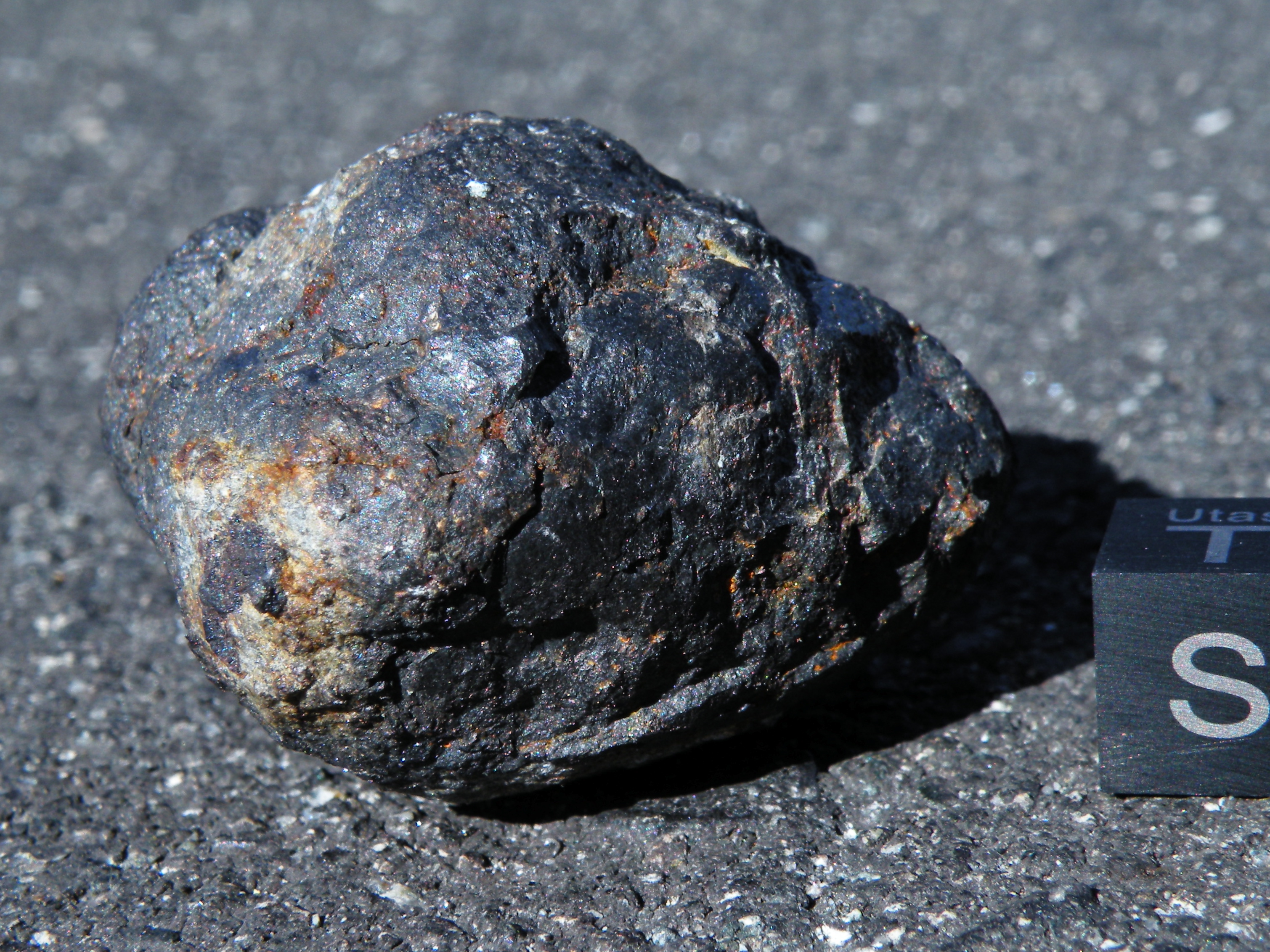
Many people believe that meteorites are simply black-grey-brown magnetic rocks. Without additional testing, they will claim that their stones are meteorites. Take, for example, the following two images:
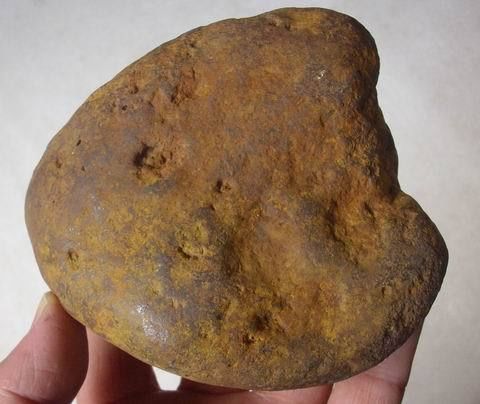
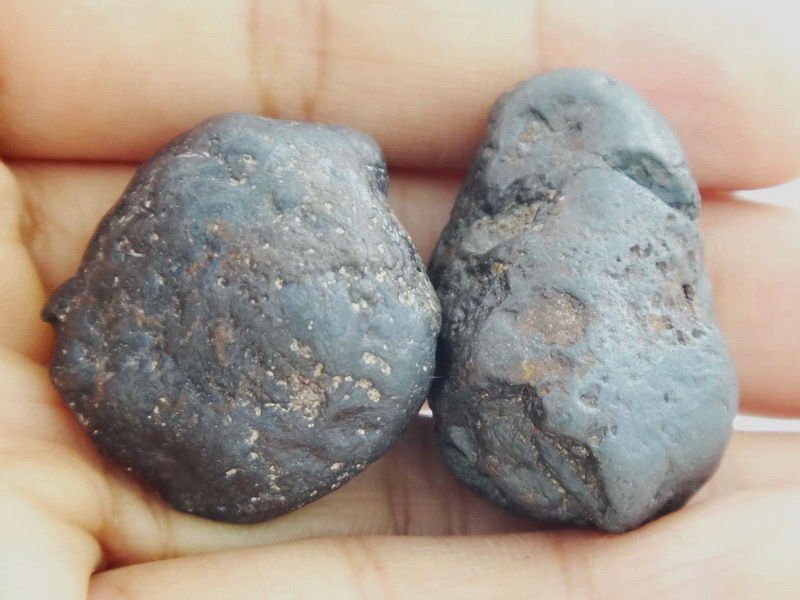
“Mekong River Iron” specimens (hematite) are commonly misrepresented as iron meteorites. Why? The rocks are magnetic and vaguely resemble the oxidized Nantan meteorites common elsewhere in China, but if you cut them, they’ll look ~grey and dull silvery inside, not like any known meteorites.
One detail that’s particularly useful is fusion crust: the molten layer that forms on a meteorite as it’s ablating in the atmosphere. Even weathered, old fusion crust tends to leave a characteristic smooth surface behind. The above specimens of hematite have rounded high points, but lower areas that were protected from river-tumbling are still rough. They’re water-worn rocks.
Ablation in the atmosphere smooths even protected surfaces:
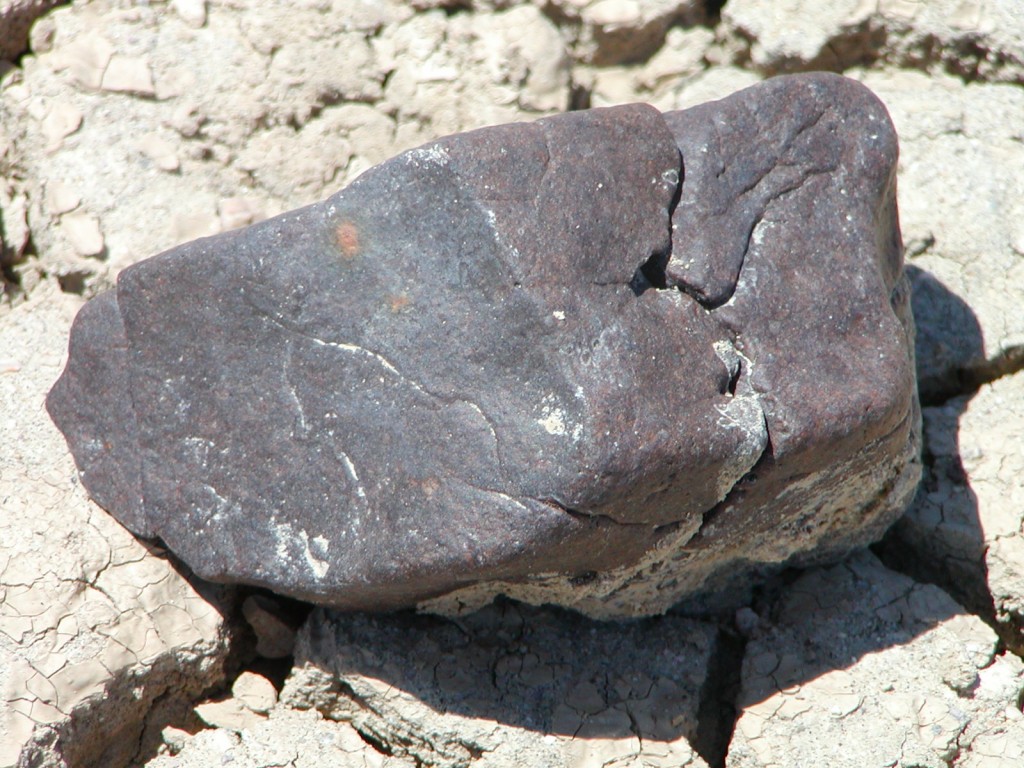
The above meteorite started out as a completely smooth rock. Cracks formed via weathering, but every face of the rock is still pretty smooth; even the flat and concave faces. It’s unusual for terrestrial rocks to weather like that, but it does sometimes happen.
Another good example:
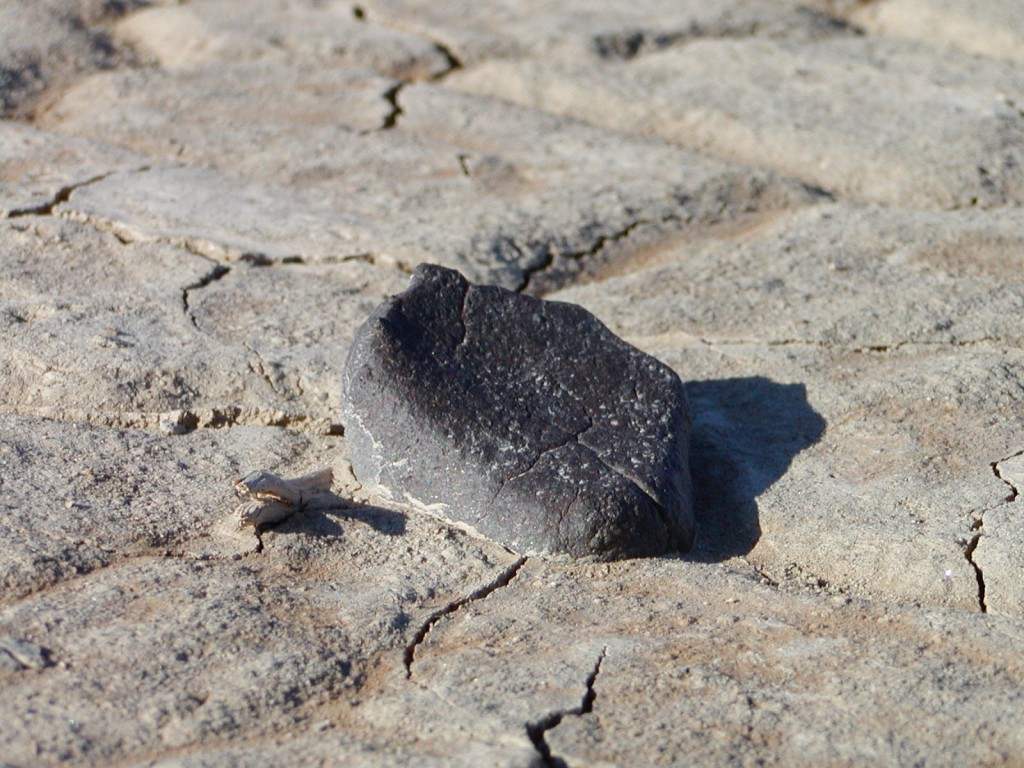
The lake bed we found the above meteorite on is covered with bubbly lava. Basalt is the most common rock on the lake. The meteorite lacks fresh fusion crust and looks kind of like the basalt. But, most of the basalt on this playa does’t have rounded corners or clear internal fractures like the above rock. The basalt is also generally not magnetic, though there are exceptions. A quick poke with a magnet confirmed a high iron content, and a closer look revealed protruding chondrules. Why the small mud-filled dimples that look like bubbles? Some iron grains had rusted away, leaving little holes, and some chondrules had been plucked out by erosion. Those shallow pits are not bubbles, although they look a little like them. If you think about what a chondrite looks like when cut, this should all make sense. Again, note the large, smooth, slightly concave surface. Lava doesn’t usually do that.
Here’s another example:
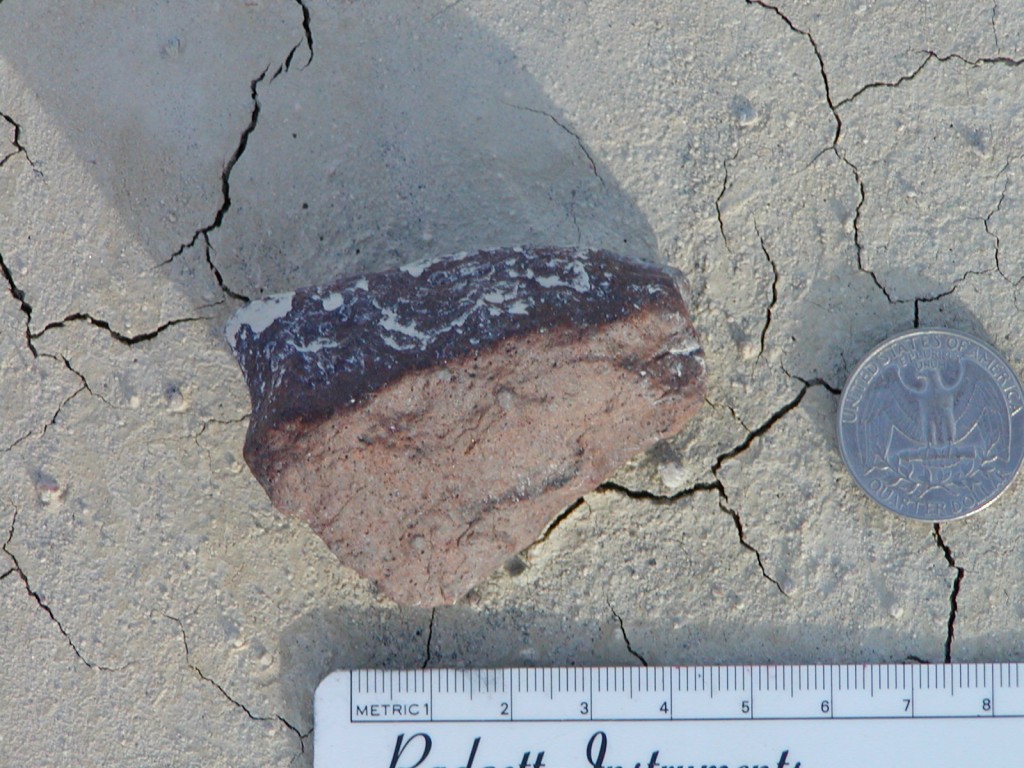
Few meteorites are this red/orange in color, but it sometimes happens when they’ve been on Earth for long enough to oxidize much of the metal inside them. The lake bed this meteorite came from is covered with rhyolite and similar volcanic rocks; they, too, lose some of their more reactive minerals while weathering, resulting in rocks with similar pseudo-porous textures (e.g. take a rock, weather the feldspars out, and you wind up something that appears to have small vesicles/holes). The difference? The above stone is more strongly attracted to a magnet and lacks the small ~rectangular crystals/vugs that can be seen in the local volcanic rocks. It also exhibits a few rounded chondrules and is a slightly different color. Note: no known meteorites contain sedimentary banding, though shock veins are sometimes present (see below).
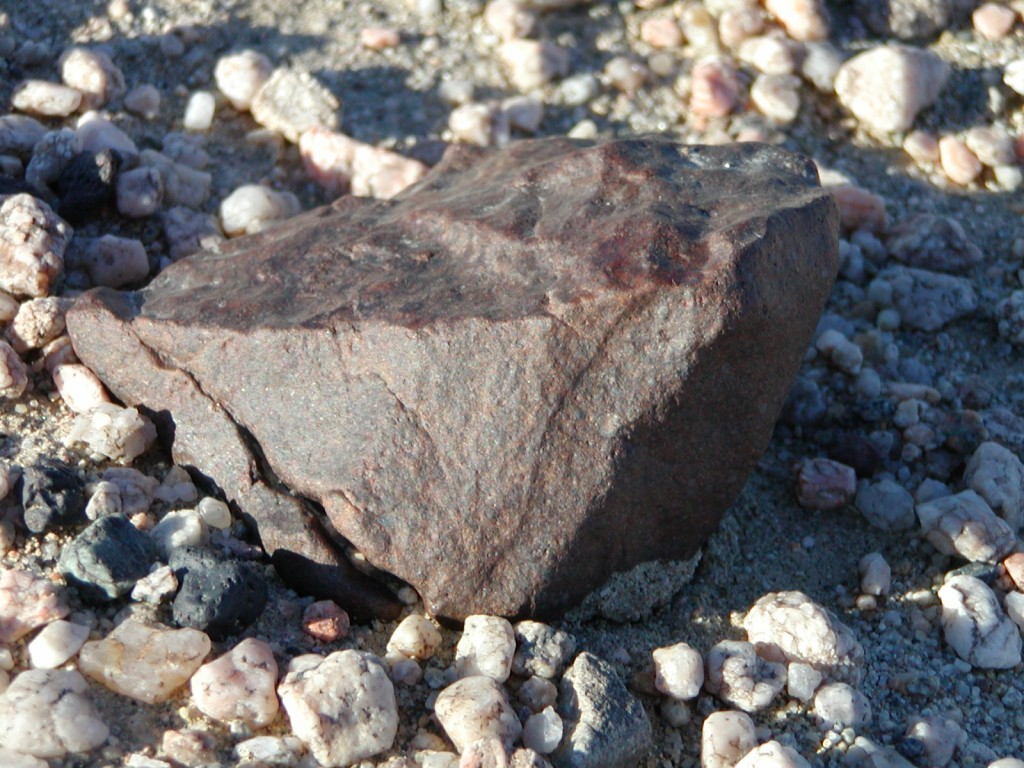
Details to note:
1) Smooth front face due to remnant fusion crust. The top side is broken and weathered; it has a different, rougher texture.
2) An irregular shock vein crosses the right side of the stone.
3) A large rusty spot is visible on the top of the stone, where an FeS inclusion oxidized.
4) A large chondrule (light circle) is visible just to the right of the shock vein.
Not all rocks that contain spherical/round inclusions are meteorites. Most are not. But most Earth rocks do not contain similar round features, while most meteorites do, so they are a good discriminant. The same goes for iron and rust; many terrestrial rocks are magnetic and contain minerals that oxidize. But whereas 90%+ of meteorites will rust over time, only a few percent of Earth rocks will rust; it often pays to give rusty rocks a second look.
Here’s another good example emphasizing color:
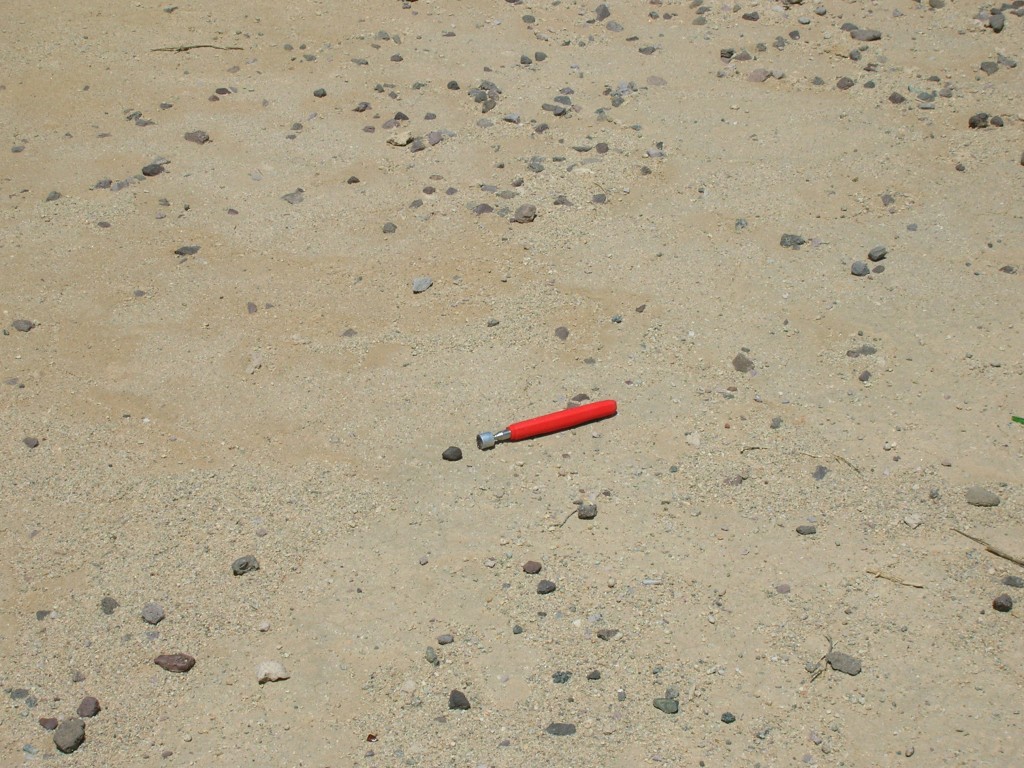
Sure, there are a few dark rocks in the image, but the meteorite (dark/round stone ~1-2 inches from end of cane) is clearly one of the darkest objects in the image. If you can stop for a moment and rule out 95%+ of the rocks within sight, it’s a useful trick. Few meteorites are actually black, and you have to watch out for dark, homogeneous pieces of hematite or other FeO(H) combinations that are often pretty distracting, and magnetic. It can be a good idea to keep a sample meteorite on hand for reference; depending on the lake, you may have to calibrate your eyes for the lightest, darkest, smoothest, or otherwise different rocks.
Rusty brown (e.g. old tin can color) is generally a good guideline. Chondrules: great. Euhedral crystals (minerals with clearly geometric or flat crystal faces) are probably bad news. Parallel veins or layers: also bad news. Fusion crust: great, but watch out for deceptive desert varnish or weathering rinds. Crystals that look like quartz: probably bad news. There are exceptions to most of these ‘rules,’ but they’re good guidelines if you’re not familiar with every type of meteorite and hope to find something out there.
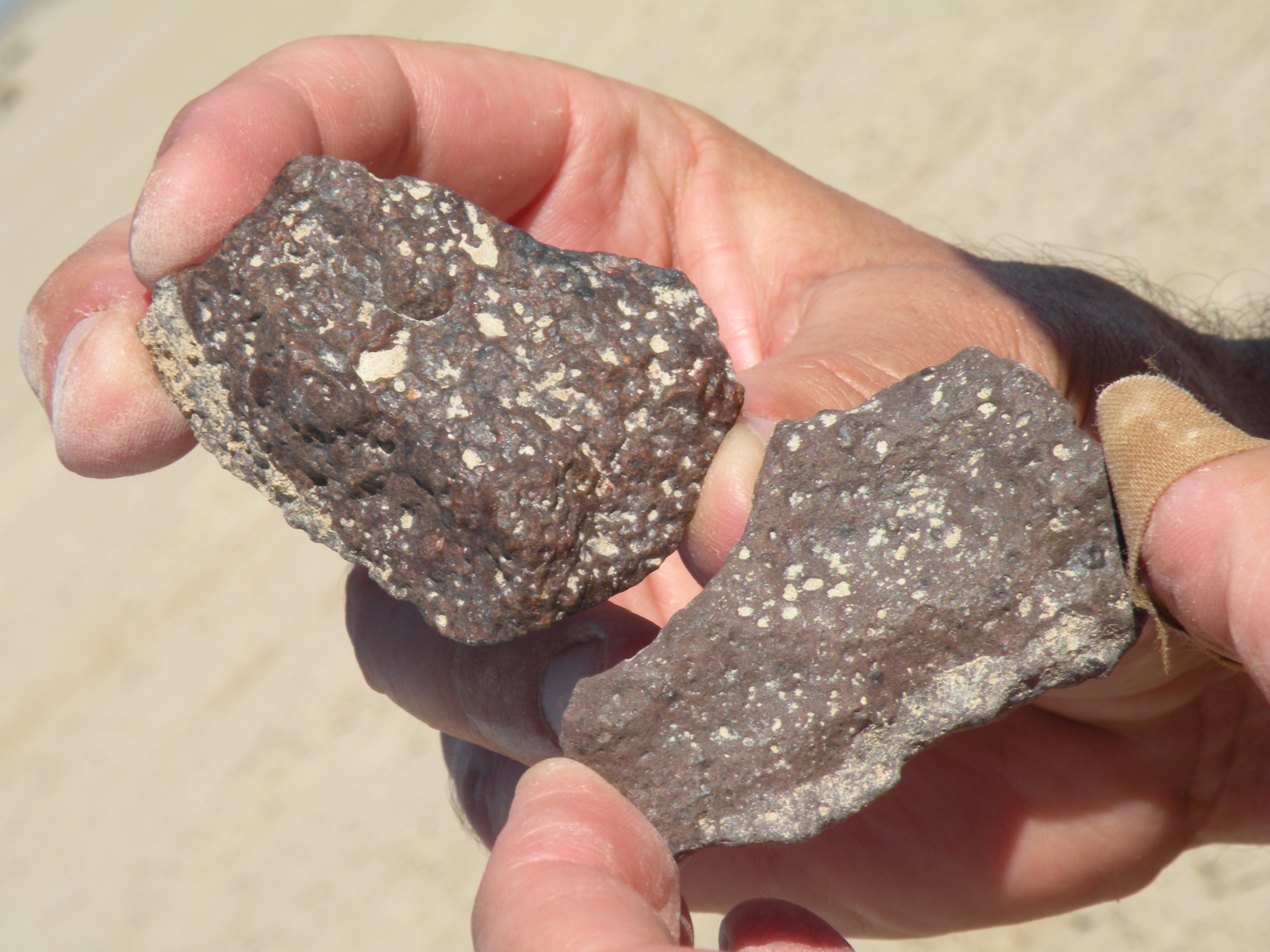
If in doubt, bring it home and either cut it or send it to an institution capable of analyzing it. If you’d like to know whether or not your rock is worth sending in, I’d be glad to have a look at a photo. I can almost always tell from a clear photo.